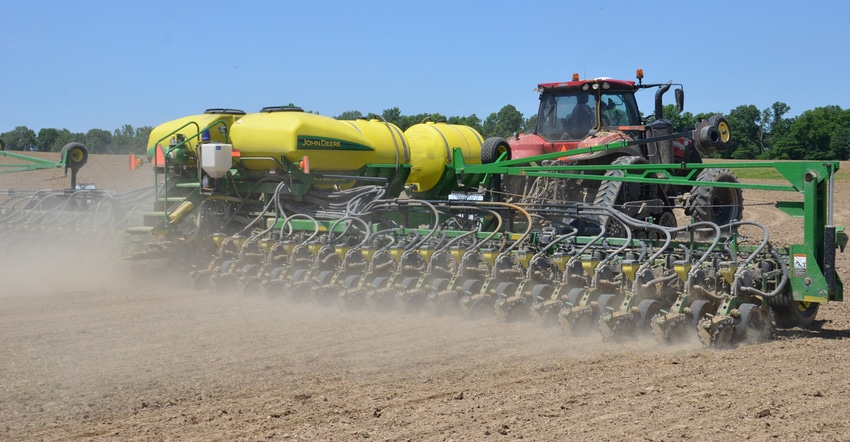
Impressive yields of 224 bushels per acre in replicated plots for corn planted June 3, 2019, make one point clear. Planting date isn’t the only factor that determines yield. A host of other factors, some under your control and some not, play major roles. But don’t let last year’s success in many late-planted fields lull you into thinking timely planting isn’t important.
That’s the message Jim Schwartz delivers to farmers asking about planting dates. Schwartz, an agronomist and director of Practical Farming Research for Beck’s, says nearly two decades of results in Beck’s PFR studies make it clear that when you have a choice, timely planting is important.
“We have enough years of data to be confident that over the long haul, timely planting is an important indicator of higher yield potential,” Schwartz says,
Here’s a closer look:
Corn performance. Beck’s examined 17 years of multiple-location data for corn and compared yield at each of six date ranges as a percentage compared to the mean of all trials. For example, yields for corn planted April 1-15 yielded 106% of the mean for the trial, notes Samantha Miller, Beck’s agronomy information specialist.
Other ranges and percentages were: March 16-31, 97%; April 16-30, 105%; May 1-15, 102%; May 16-31, 102%; and June 1-15, 87%.
Miller also looked at the number of times a planting date range “won,” meaning it was the highest yield, or “lost,” meaning it was the lowest yield. This was based on 15 years of Indiana data. March 16-31 won twice and lost twice; April 1-15 won three times and lost once; April 16-30 won twice with no losses; May 1-15 won four times and lost once; May 16-31 won three times and lost three times; and June 1-15 won once and lost eight times.
Soybean performance. Here are similar results for soybeans, based on 20 years of multiple-location data for percentage yield within a planting date range compared to the mean for all ranges in all years. Ranges and percentages were: March 16-31, 98%; April 1-15, 108%; April 16-30, 108%; May 1-15, 107%; May 16-31, 97%; June 1-15, 92%; and June 16-30, 79%.
Wins and losses, as defined previously, for 15 years in Indiana were: March 16-31, no wins and two losses; April 1-15, six wins and no losses; April 16-30, five wins and one loss; May 1-15, three wins and one loss; May 16-31, one win and one loss; and June 1-15, no wins and 11 losses.
Take-home message. “Corn has a much wider window of opportunity to achieve high yields, whereas soybeans are very sensitive to late planting,” Miller says. “If you apply this conclusion to your planting strategies, that gives you two options to be most profitable.
“If you have the equipment and manpower, plant both corn and soybeans at the same time. If you don’t, you could plant soybeans early to increase chances of higher soybean yields, and plant corn shortly afterward.”
Economic payoff. In a separate soybean experiment at multiple locations over five years, Beck’s compared five seeding rates, from 100,000 to 200,000, at two different planting ranges, April 16 to May 15 and May 16 to June 15. Looking at gross revenue minus seeding costs, all early-planted trials performed at least $132 per acre better than any later-planted trials, no matter the seeding rate.
The overall average advantage for seeding early was $146.49 per acre.
About the Author(s)
You May Also Like




